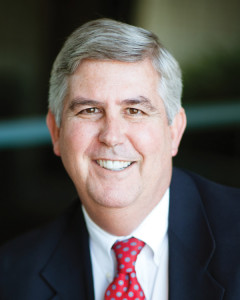 Developers are following John Graham’s lead in urban development. Central Phoenix is booming because of it.
Developers are following John Graham’s lead in urban development. Central Phoenix is booming because of it.
Graham was the featured guest at the recent annual LISC Phoenix Annual Breakfast and Community Awards. Here’s my recap of the breakfast:
LISC Phoenix 2015 Annual Breakfast and Community Awards Recap
LISC Phoenix 2015 Annual Breakfast and Community Awards Recap
Longtime business leader John Graham developed a compulsive interest in urban infill development on opening day of the Phoenix area’s light-rail system in 2008. At that time, sprawling, greenfield suburban projects highlighted his real-estate company’s portfolio.
“What I noticed during that one ride was how much available land there is,” Graham said at the 2015 LISC Phoenix Annual Breakfast and Community Awards celebration. “As a developer, pathologically, it makes me drool a little bit figuring out what to do with it.”
Mark Stapp, executive director of the W.P. Carey Master of Real Estate Development program at Arizona State University, said Graham has figured it out. The Sunbelt Holdings President has under his belt “two of probably the most notable and significant infill, light-rail, transit-oriented projects in metro Phoenix,” he said.
Sunbelt Holdings’ 2 million-square-foot Marina Heights commercial project adjacent to Tempe Town Lake is leased almost entirely by State Farms Insurance and the 14-story Portland on the Park urban living development near Hance Park is under construction in the downtown Phoenix Roosevelt Historic and Arts District.
“I’m definitely having more fun doing what we’re doing today than I ever have,” Graham said of his company’s pivot from suburban to urban development.
Stapp interviewed Graham as part of the LISC Phoenix celebration on Nov. 18. More than 250 people attended the Valley’s premier community development event to honor the 2015 award recipients: The Caterpillar Foundation (exemplary partner), Arizona Department of Housing Director Michael Trailor (exemplary advocate) and Victory Place, a Cloudbreak Community in Phoenix (exemplary project).
Stapp and Graham continued a line of thought Phoenix Mayor Greg Stanton shared in his welcome remarks about the strength and popularity of light-rail and transit-oriented development (TOD) being signs of a maturing city.
“As we begin looking forward into what I’ll call our teenage years as a metropolitan area, we have established this formative tool that we now know is shaping the urban pattern of metropolitan Phoenix in such a dynamic way,” Stapp said. “And it’s coinciding with the change in population characteristics that support that kind of development.”
They also discussed the health and financial benefits of TOD, the growing social and cultural interest in living in sustainable communities that are flexible, innovative and responsive to needs of people of all incomes, and the mounting evidence that urban projects are good business decisions.
Graham said a recent review of sales taxes shows revenue is flat in the suburbs; all the growth basically is in urban areas. The revenue trend presents an “a ha moment” about urban development for business leaders and policy makers, he said.
But what Graham focused on seven years ago after his inaugural ride on the regional light-rail system was figuring out how to work through the complexities of building on smaller parcels in urban projects that often need the collaboration and cooperation of others in public and private sectors to succeed.
How do we connect private projects with public amenities such as light rail, Hance Park and Tempe Town Lake that establish social and physical support systems? How do we stabilize urban housing stock and make it vital on an ongoing basis? How do we, in Graham’s words, put “good rooftops in the right places to help the people who need it most?”
“It’s a good business opportunity, but most importantly it’s just the right thing to do socially and economically,” Graham said of infill projects. “For the vitality of our cities and urban areas, it’s something we all need to continue to focus on.”